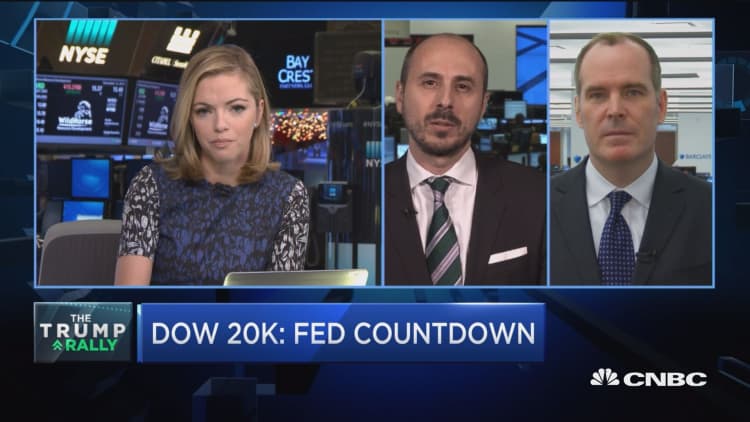
Oil prices reversed earlier losses on Thursday after failing to break below technical support levels and as OPEC members told customers they would cut crude supplies as part of the cartel's agreement to reduce output.
Earlier in the day, prices fell to the lowest level in a week as the dollar rallied following an increase in U.S. interest rates.
The dollar rose to a 14-year high against a basket of other currencies after the U.S. Federal Reserve raised rates for the first time in a year on Wednesday. A stronger dollar, in which oil is traded, tends to hit crude demand as it makes fuel purchases more expensive for users of other currencies.
International Brent crude oil futures rose 18 cents to $54.08 a barrel at 2:35 p.m. ET (1935 GMT), down 14 cents from their last close.
U.S. West Texas Intermediate (WTI) crude oil futures settled down 14 cents at $50.90 per barrel.

"Brent tested the key $53 (a barrel) support level and now we're seeing some buying because there is too much optimism as the market waits to see how some of OPEC's supply cuts come through in the export data," said Troy Vincent, an oil analyst at ClipperData in Louisville, Kentucky.
The Organization of the Petroleum Exporting Countries and other producers led by Russia have promised to cut production by almost 1.8 million barrels per day (bpd) in an attempt to clear a global oversupply that has depressed prices for more than two years.
National oil companies in Saudi Arabia, Kuwait and Abu Dhabi have told customers in Asia they would cut crude supplies following OPEC's decision to cut output. Saudi Arabia also told U.S. and European customers it would reduce oil deliveries, and traders said other OPEC members are expected to do the same.
"These delivery cut announcements provide psychological support that OPEC will follow through with their planned output cuts," ClipperData's Vincent said.
ANZ bank said on Thursday oil markets would move into a substantial deficit in the first quarter of 2017 if OPEC and other producers reduced output as promised.
"This will likely push oil prices well above $60 per barrel early next year," it said.

Oil companies have slashed costs in order to survive the low price environment, industry data show.
"2017 will be the third year investments go down, with 3 percent (declines). You need to go back to the '80s to see three consecutive years of investment cuts," said Audun Martinsen, vice president for Oilfield Service Research at Rystad Energy.
Crude prices also received some support from falling U.S. crude inventories.
Data from the U.S. Energy Information Administration (EIA) showed that commercial crude inventories last week declined by 2.56 million barrels to 483.19 million barrels.
However, traders said it is far from clear whether OPEC and other producers will follow through with their announced cuts.
OPEC pumped 33.87 million bpd last month, according to figures it collects from secondary sources, up 150,000 bpd from October, OPEC said in a monthly report on Wednesday.
That shows the group's output has continued to rise, adding to a global glut, ahead of the January start of its first supply cut agreement since 2008.
That could raise questions about its ability to comply fully with the deal.

